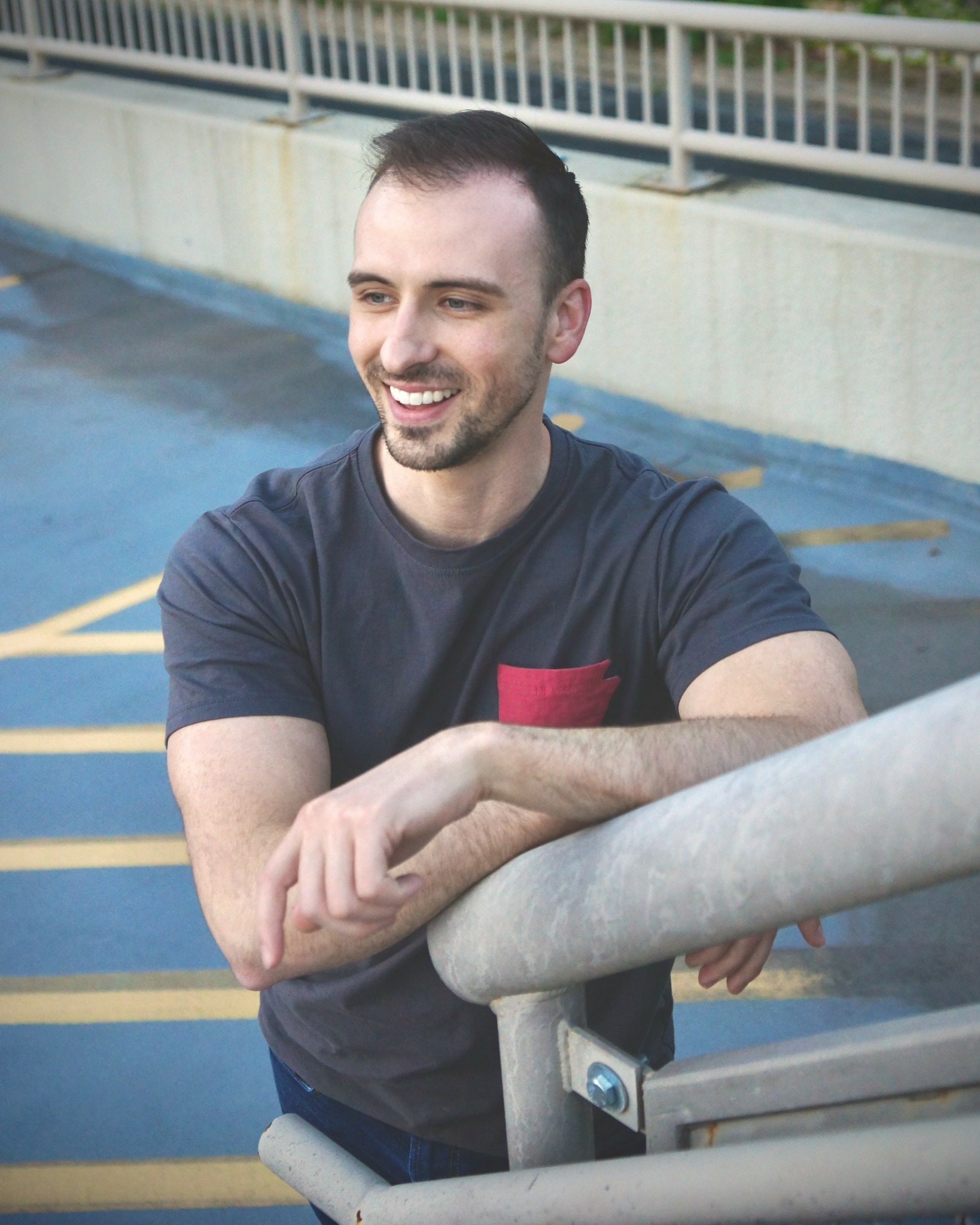We were lucky to catch up with Ryan Rogers recently and have shared our conversation below.
Ryan, thanks for taking the time to share your stories with us today What was it like going from idea to execution? Can you share some of the backstory and some of the major steps or milestones?
The day I had the idea, I was in graduate school for Theoretical Chemistry at the University of Arkansas, walking to my shared office as a research assistant. All the fraternity and sorority kids wore the same kind of clothing like an unspoken dress code. Nearly every single “Greek” member you saw could be categorized as wearing a short sleeved, pastel-colored, over-sized, pocket tee, with the shape of Arkansas on it and of course, their Greek insignia. Something to know about the University of Arkansas is that it’s the largest and most popular university in the state, in the fastest growing, most popular, and possibly most state-pride location of the state.
Like so many (of my) other ideas, this one was just a fleeting thought that popped into my head: Since the “Greek” students love Arkansas and pocket tees so much, why not make a t-shirt with an Arkansas-shaped pocket? At that time, the whole Northwest region of the state seemed to be obsessed with the shape of Arkansas as far as branding and local decor was concerned. And since the state is fairly boxy, with a totally horizontal top and bottom (northern and southern borders, respectively), the idea seemed to me like one of those “million dollar” ideas I was probably just lucky enough to think up before anyone else.
If that was day 1 of the idea-to-execution process, then the next step forward didn’t really occur for about 1,800 days (about 5 years). Like I mentioned, I was at the University to study chemistry, not apparel. So I just sat on the concept of Arkansas-shaped pockets on t-shirts until I finished grad school and had serious time to dedicate to the project. Now and then I’d quip to friends and family about the idea, and how someone is obviously missing out on a great idea and how I couldn’t believe it hadn’t been done already.
Once I decided to put serious effort into making the garments, just about the only thing I knew was that I didn’t know anything I’d probably need to know. For those who may not be familiar with theoretical chemistry, we don’t sew, design clothing, study business, or have contacts for manufacturing, sourcing, and branding. Safe to say, I was starting out below “ground zero” on this one.
My approach has always been to do something. Sure, I have no idea how to get from A to Z, but maybe I can at least get from A to B, and then re-evaluate. I had no idea who would make the clothes or how I would sell them; but I did have an idea for a brandname and logo. And since I’d certainly need those at some point, I remember that that was one of the first things I could start working on. Besides, pens and paper are basically free, and I’ve always enjoyed thinking about and sketching logos anyway.
At the same time, I needed to start learning all the stuff I didn’t know (which was basically everything). At the beginning of a project, I think one of the first hard things you encounter is the fact that you really don’t even have a good grasp on what questions to ask or what or how you need them answered. Experience has shown that when you just try, you’ll eventually start to uncover the questions you ought to be asking, and how to ask them. And that’s when you start to make the first real progress.
So I started learning everything. How are t-shirts made? How do sewing machines work? What machines make shirts? What makes Bella Canvas blank tees different than Gildan’s? How are pocket tees made? Who sews the pockets? What’s the difference between sewing, embroidery, and appliqué?
It didn’t take too long before I learned why no one had done really uniquely-shaped pockets before: there’s a very effective machine that automatically sews the material for all the pocket shapes you’re wearing. (Think classic t-shirt and Western frockets, rear pockets on denim pants, etc.) This meant that even companies who made “custom pocket tees” weren’t up to the task of making a truly new and unique pocket. While they might be willing to swap the fabric material, color, or special printing for you, they were still using a pocket machine with standard pocket shape templates.
If I wanted Arkansas-shaped pockets on shirts, they were going to have to be hand sewn.
Ok, so now I know why all shirt pockets are the same (or one of a few) shapes. Too much elbow grease required to break the mold. But this shouldn’t be a death-sentence for my dream brand, right? There’s actually still a lot of hand-work in pretty much every apparel line. Even where machines can automate big tasks in the workflow, there’s still an army of skilled laborers sitting at sewing machines at some point in the garment’s manufacturing journey. I just needed to convince one of these “armies” to sew a shape they hadn’t tried before, right?
Look in your home closets, and you’ll find all sorts of items with way more intricacies than what I’m asking for– moto jackets, “designer” clothes with weird seams, lingerie, and grandma’s patterned quilt. I was still of the belief that all I was asking for was for someone to take a pre-made, blank tee, cut an Arkansas-shaped patch, and sew them together leaving the top edge open for the pocket.
Growing up, my mom could mend lots of stuff and even make minor creations on a sewing machine. I bought some blanks and fabric scraps, and she made the first prototype (while I supervised). Now I could wear my design, take photos, and show people the design without stuttering through the concept. But Mom certainly wasn’t going to sew these for the masses.
My next step was to move the next prototype closer to production quality. But I was flabbergasted at how difficult it was to find a factory willing to try something new. I talked to everyone: local tailors; references from the University’s design and textiles professors; industrial stitching shops; big-name manufacturers like Gildan and Bella Canvas; clothing brands that started local and made it national; full-custom “cut and sew” designers in New York, California, and China; the CEO of Buc-ee’s (yes, the gas stations); and anyone who advertised “custom apparel.” (I came to realize that 99% of the time, “custom apparel” or “custom clothing” only means custom printing on very not-custom garments.) I finally convinced a local embroidery shop to test the concept for me. They did an excellent job and the prototype was production-quality, but completely uneconomical. Americans are very expensive. But I couldn’t get anyone else to take the next step.
In product development, there can be a big difference between how you make a one-off prototype and the tools and protocols you’d need to use in a many-unit production setting. That was the situation I was in. I had convinced one local shop to attach one piece of custom-shaped fabric to another, but I was buying two shirts at a time so that the pocket fabric would perfectly match the shirt body. So my “manufacturing cost” was already about 3x what you’d ever want to pay for a t-shirt, before marking it up even a cent.
I guess I shouldn’t say that I couldn’t get anyone else to take the next step. Bella Canvas would do it for an order of 100,000 or more tees. A design house in California agreed to try a prototype for a mere $4k up front to open a file in my name, but they weren’t confident they could do it. The local embroidery shop I mentioned would do it, if I was willing to pay. But they could probably only output a few tees per week. One company in China tried it, but couldn’t get the shape of Arkansas anywhere nearly acceptable to an American (let alone an Arkansan).
I wish I didn’t have to say that the linchpin in my whole product line came to me by luck. Thankfully for anyone trying to extract actionable advice from this story, I’m confident that determination, persistence, and long hours were also a necessary ingredient. It’s certainly true that I was working consistently to figure out how/where/who could manufacture my designs; and perhaps my “luck” wouldn’t have fallen in my lap without those hours. I fully believe that “good luck comes to those who work really dang hard.”
At any rate, my lucky linchpin came from a totally unrelated Fiverr project. I had commissioned a freelancer on Fiverr, named Ahmad, to help with a logo for a science education brand I developed. He made some really cool logos for me, and was easy to communicate with– which may be one of the most important traits in any business partner. At the conclusion of the commission project, I asked a question about the fonts he used in the designs, and he casually responded with, “I will send you the font details ASAP. I also manufacture any type of clothing and apparel.”
Even though I’ve subsequently asked why Ahmad made that comment to me, I’ve never gotten any answer that doesn’t involve wild, blind chance and luck. At the time, I don’t think there was any way he could have known that I was working on Well Stated Clothing. Regardless, he’s exactly the kind of partner I want for all my projects, yet the kind of person who is probably one in a million rare.
For the Well Stated Clothing brand, we could say that “the rest is history;” though that doesn’t mean it was easy or fast. Remember that I only had prototypes up to this point; no sizing, no brand colors, no guaranteed customers, and virtually no money for large order quantities. But with the right manufacturing partner, I could finally work through prototyping the production tees. Through lots of back-and-forth regarding the pocket shapes and garment design (the term “just a standard t-shirt” doesn’t mean much when you’re dying and cutting your fabric from scratch), I learned that we needed to make these shirts totally custom– not just sewing a custom pocket on a premade tee. Just one more reason no one else is doing t-shirts like mine.
To test the waters with the smallest possible investment, I launched the brand in 2022 with a single color of the Arkansas pocket, but no printing or other designs on the shirts. I’d say this was a bust, in that my initial product did not generate the type of data that made it clear whether or not I had a valuable product. So in hopes of demonstrating the breadth of the brand I wanted people to understand, I expanded the line to include more colors and 10 different state-shaped pockets. Now we’re shifting to made-to-order jobs for clients who want something truly unique and at least a few hundred pieces of it. Our first “big break” came from landing a contract for a year’s worth of custom printed tees and sweatshirts with Arkansas-shaped pockets for retail at the Arkansas State Capitol.
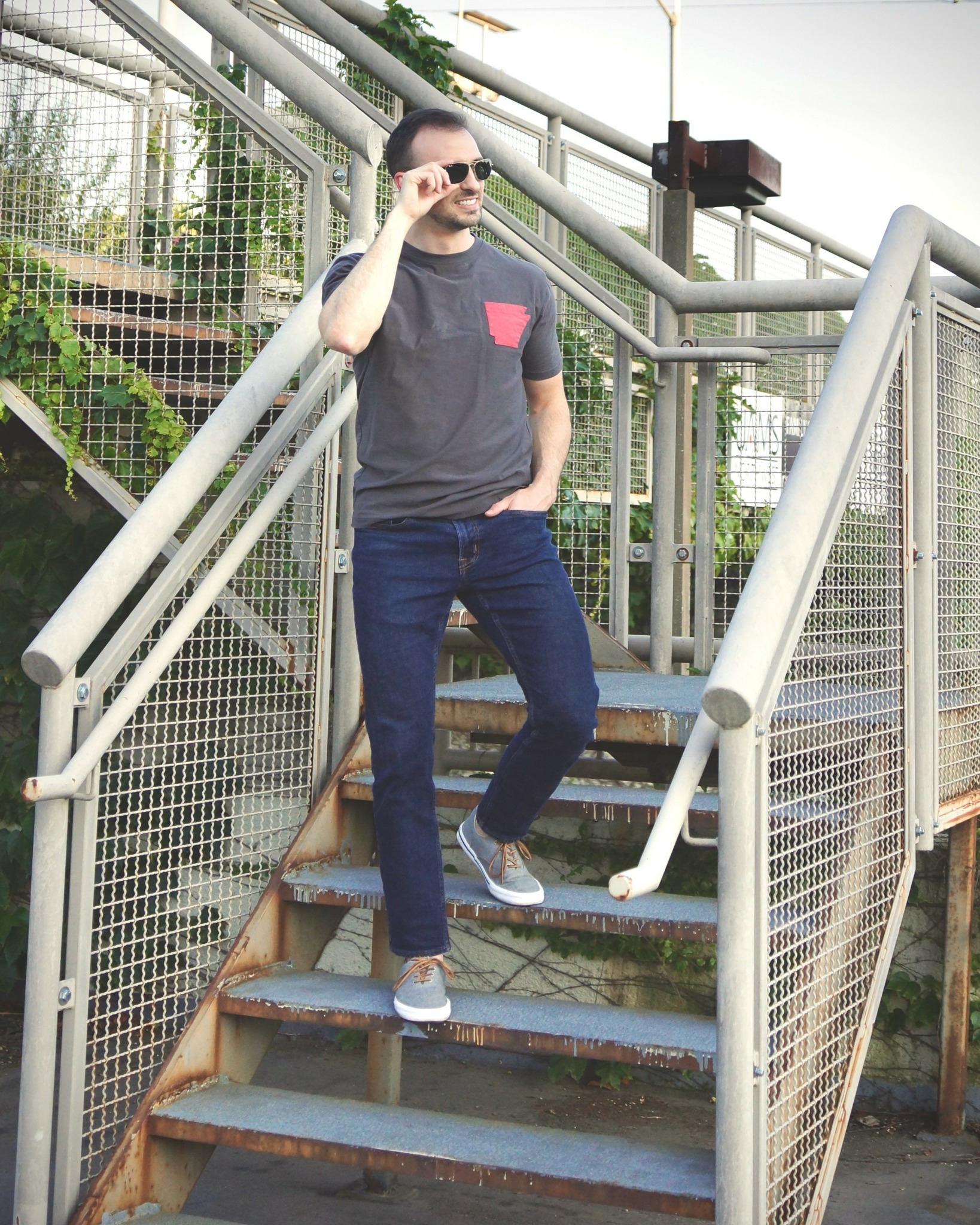
As always, we appreciate you sharing your insights and we’ve got a few more questions for you, but before we get to all of that can you take a minute to introduce yourself and give our readers some of your back background and context?
I’m not supposed to be doing this.
I earned my bachelor’s degree in Physics and my doctorate in Theoretical Chemistry, so everyone else says I’m supposed to be doing molecular dynamics calculations. That’s a very fun and important activity, don’t get me wrong. But as long as I can remember, I’ve had an insatiable urge to be an inventor. I have products and ideas in my mind that I believe would be a shame to die without giving to the world. So I’ve chosen to spend my time developing products that make life more efficient, fun, and beautiful.
Far from “not using my education,” I feel the influence of my education in my work daily. My time in formal education taught me how to learn anything, which may be the most powerful skill to gain from education. I’ve also noticed that the way I think tends to be different– whether due to personality defaults or trained, scientific discipline– than a lot of people I encounter. Because I don’t have any formal training in “business,” I tend to see things from a different (and usually simpler) perspective. Because I do have formal training in scientific reasoning and calculations, I tend to apply a more analytical approach to my projects than most people realize is possible. I can’t imagine any other path I’d have rather traveled to end up where I am now.
As a company, my projects extend far beyond Well Stated Clothing. My vision is to introduce products into the world that are unique, innovative, and interesting. Several other brands and projects are already public, or currently in the works, that fit that vision.
By “unique,” I mean that the products have not been seen before. One thing I’ve learned is that no matter how “small” or “simple” a product is, if it’s truly unique, it will require an enormous amount of work.
By “innovative,” that I will invent new features or combine features in new ways, that make life easier, better, or more fun.
And by “interesting,” that consumers will derive joy from the use or possession of my products, whether functionally or artistically. Every business guru wants to talk about “what problem you solve for your clients;” but I think that mindset completely ignores, or at best misses, the broad and totally legitimate place of art and beauty in our lives. In the case of my brand, Well Stated Clothing, I think that the tees qualify as unique, innovative, and interesting based on the definitions here. Yet I don’t think any of my customers describes his life as having any “problem” that my t-shirt “solved” for him. It’s a t-shirt or a sweatshirt. I didn’t cure cancer. But people are happy when they wear it.
Well Stated Clothing is just one product line that I think can make life a little more fun. I think state pride– or really pride in any region that represents home to you– is something most people resonate with. And Well Stated Clothing is my way of showing off that pride, through clothing, in a way that hasn’t been done before.
I want it to matter to other people that I was alive. I’m much less interested in making a name for myself than dying with the knowledge that people sure were glad I lived– whether they ever knew my name or not.
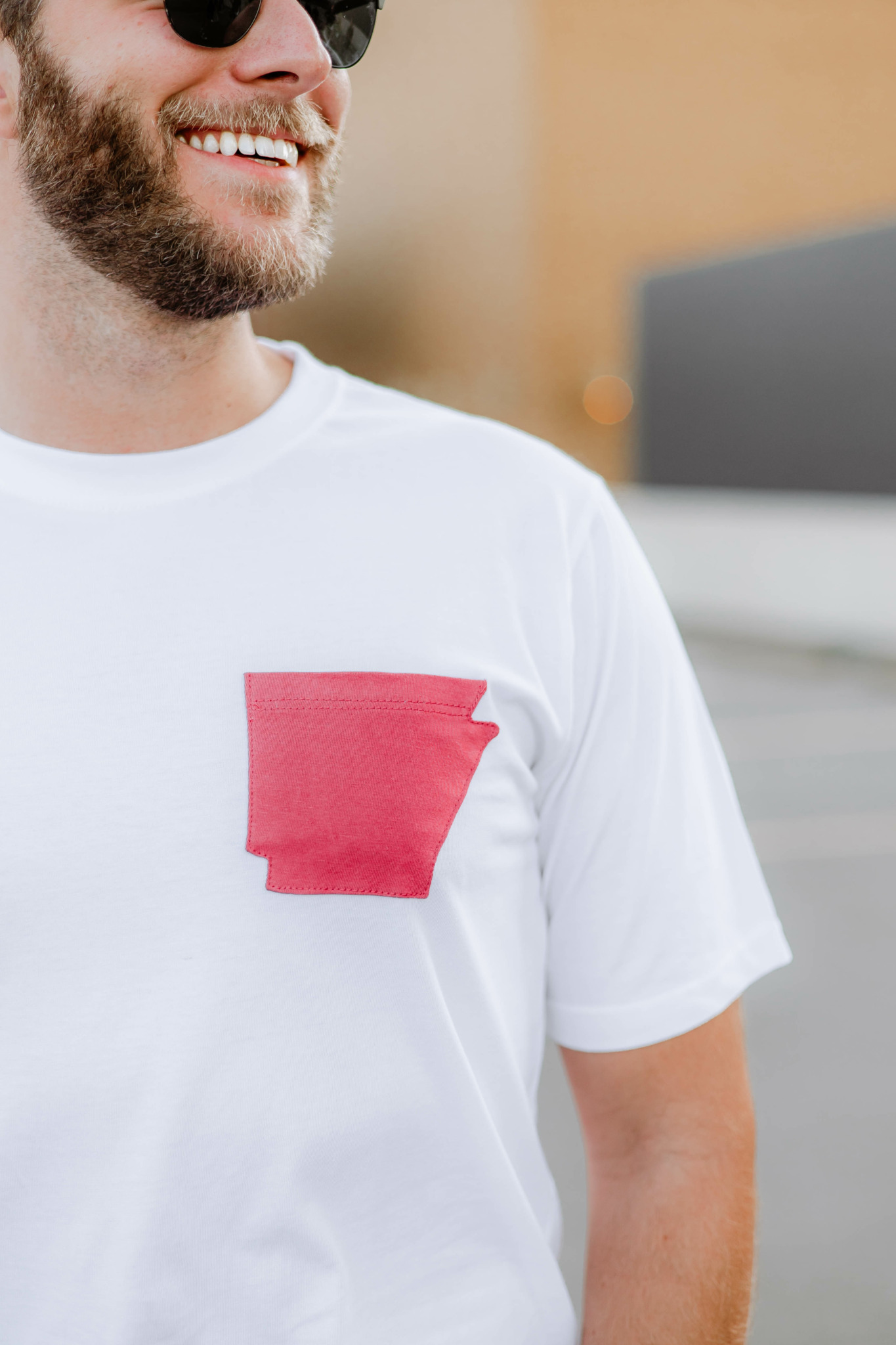
Are there any books, videos, essays or other resources that have significantly impacted your management and entrepreneurial thinking and philosophy?
Starting a couple of years before I started my LLC, I’ve been keeping a record of all the books I’ve read on [my personal website](https://www.tryanrogers.com/books-ive-read), along with a short review. I’ve read a couple of books that I didn’t think were very helpful/accurate, but the majority of business-related books showcased were valuable. At any rate, my true opinions are published along with each title.
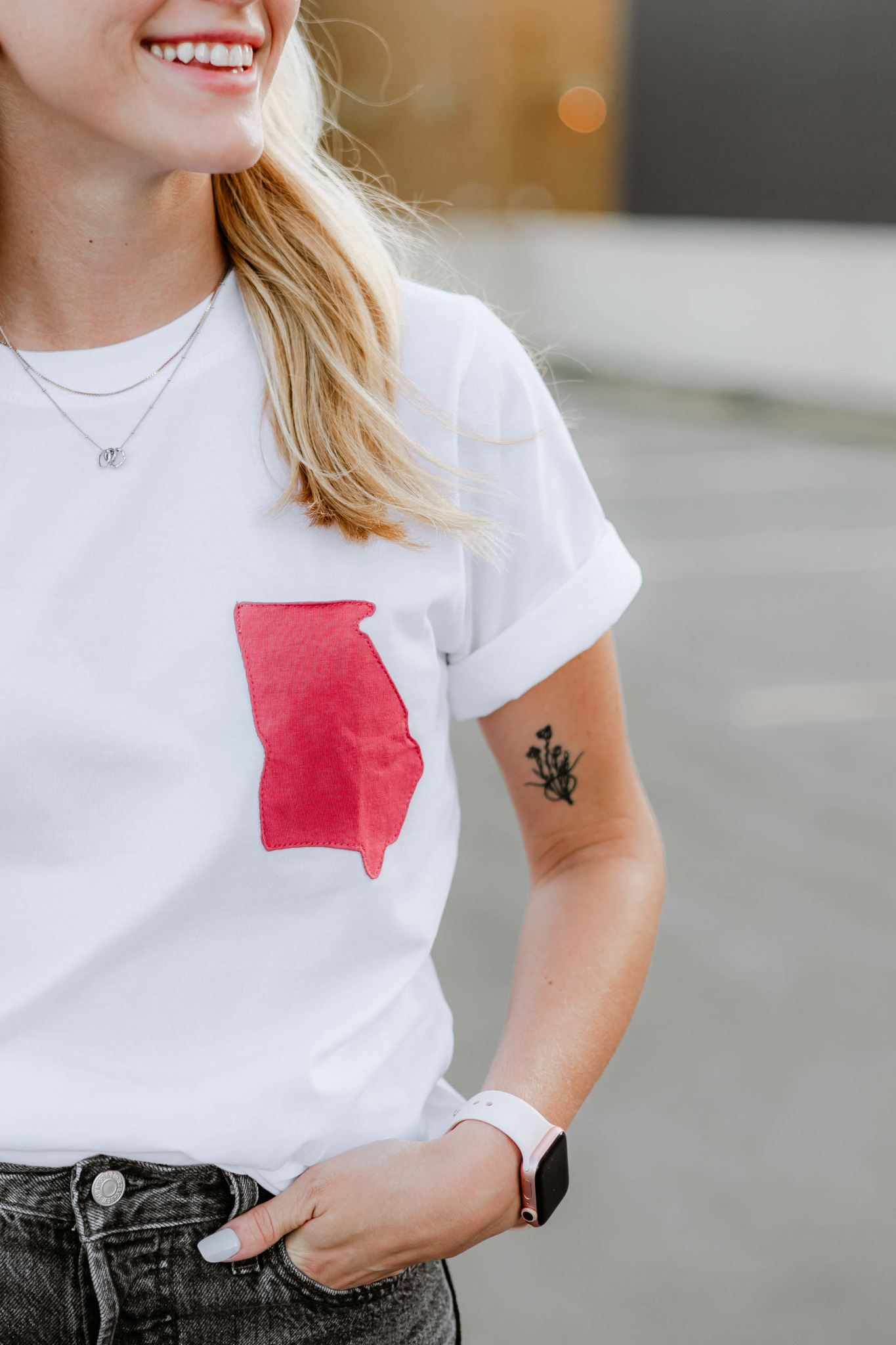
Alright – let’s talk about marketing or sales – do you have any fun stories about a risk you’ve taken or something else exciting on the sales and marketing side?
After trying a few thousand dollars in online ads here and there, I’d become pretty skeptical of their value. One day, a rep from a local media conglomerate reached out to me after buying of my company’s products in a store, and following the links and contact options until she got to me.
When she revealed that she was trying to sell me on ads with her company, I expressed my skepticism that any ads would be profitable, but offered the same challenge I give to everyone else: if you can show me reasonable, quantitative predictions of profit, I would be a fool not to spend a little money to make a good return on the investment.
Several times I’ve offered to take a rep’s predictions on good faith, and so engage with his ad company; I only require that we have at least a prediction of reasonable profit in order to start. Asking an ad rep to demonstrate that you have at least a minor shot at actual profit from the ad activities is usually enough to stop them dead in their tracks. Whether they don’t believe in their own product (the ads) or they just don’t know how to do the calculation to test a prediction of profit/loss, it’s usually like pulling fingernails to convince them to take the perspective of their client and look for whether an actual profit is even feasible in any possible universe.
Much to my surprise, she took me up on my challenge! Over the next several emails and phone calls, we worked on predictions of different scenarios together, using my products’ profit margins, sales rates, and stats from her ad agency. Even more surprising to me, the calculations actually did show a possibility of profit, or at least breaking even for me. It was going to cost thousands over the term of engagement; but the likelihood of at least breaking even was only dependent on embarrassingly small and conservative ad conversion and sales estimates.
What finally sold me on the deal was the fact that the ad agency agreed to refund me the difference in my profit and cost if I hadn’t at least broken even by the end of the term. I couldn’t believe it– an ad agency was actually aligning interests with a client (correlated profit or loss)! Then again, our calculations were specifically designed to verify that any chance of this happening would be very small. Some people can’t believe an ad agency actually agreed to it, but I was happy to see that they actually believed in their product– and a calculated risk– enough to guarantee their work. We discussed our agreement in writing, and then I too put my money where my mouth was and started running as with them.
To make a long story short, the ads were a total waste. I have some thoughts about what went wrong on a visual/textual level; but the outcome was that halfway into the year, their ads had not generated a single sale. (Sales attribution is usually ambiguous; but in this case, we had all the necessary strategies in place.) The agency’s owner balked on her agreement, but the amount they owed wasn’t enough to justify a lawsuit.
Contact Info:
- Website: https://www.wellstatedclothing.com
- Instagram: https://www.instagram.com/well.stated.clothing/
- Facebook: https://www.facebook.com/wellstatedclothing
- Linkedin: https://www.linkedin.com/in/ryan-rogers-24653a1b6/
- Other: This is the website of the parent company that owns the Well Stated Clothing brand, and contains links to all the brands and products I’ve developed:
https://www.trrdesigns.net
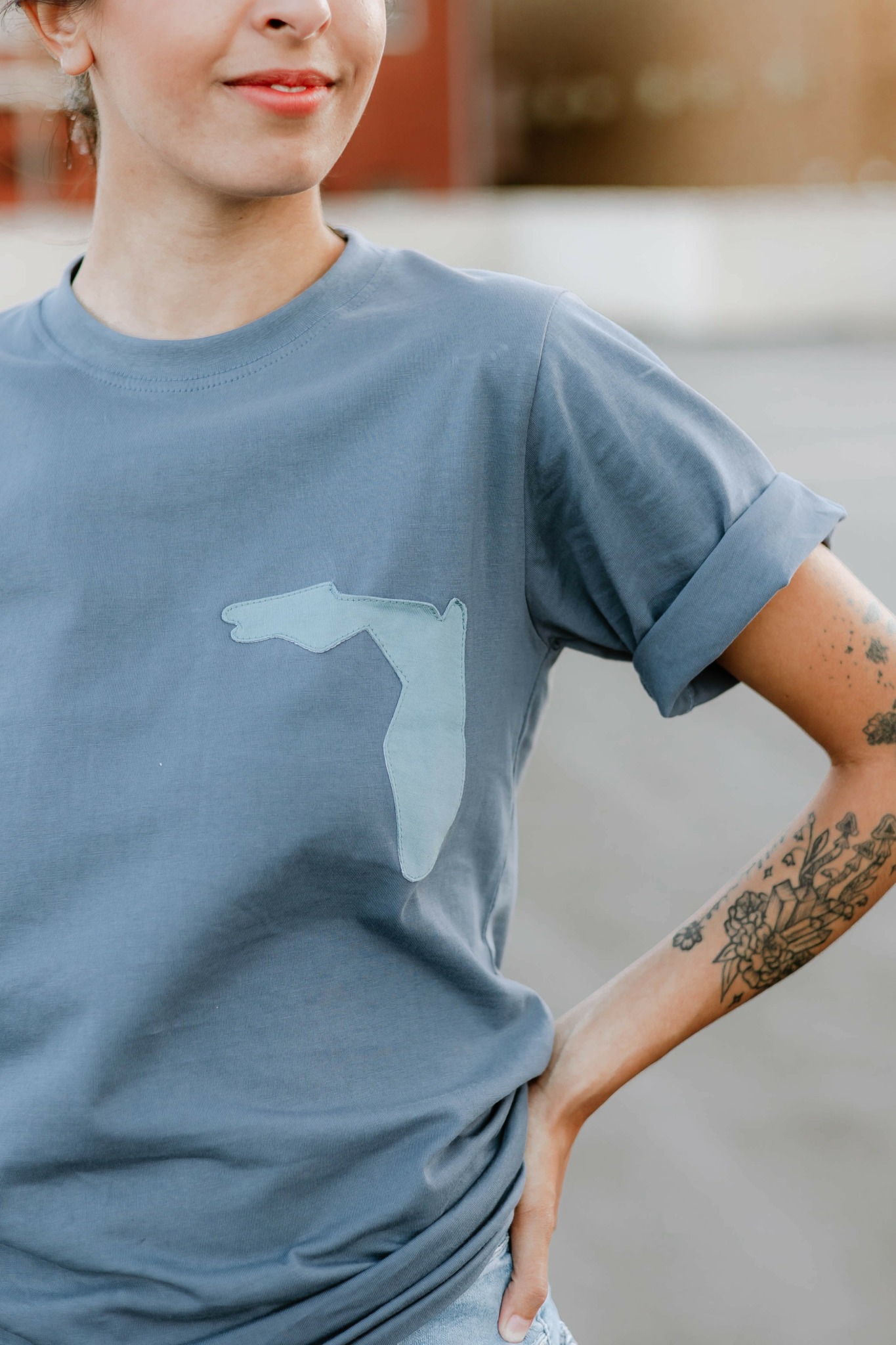
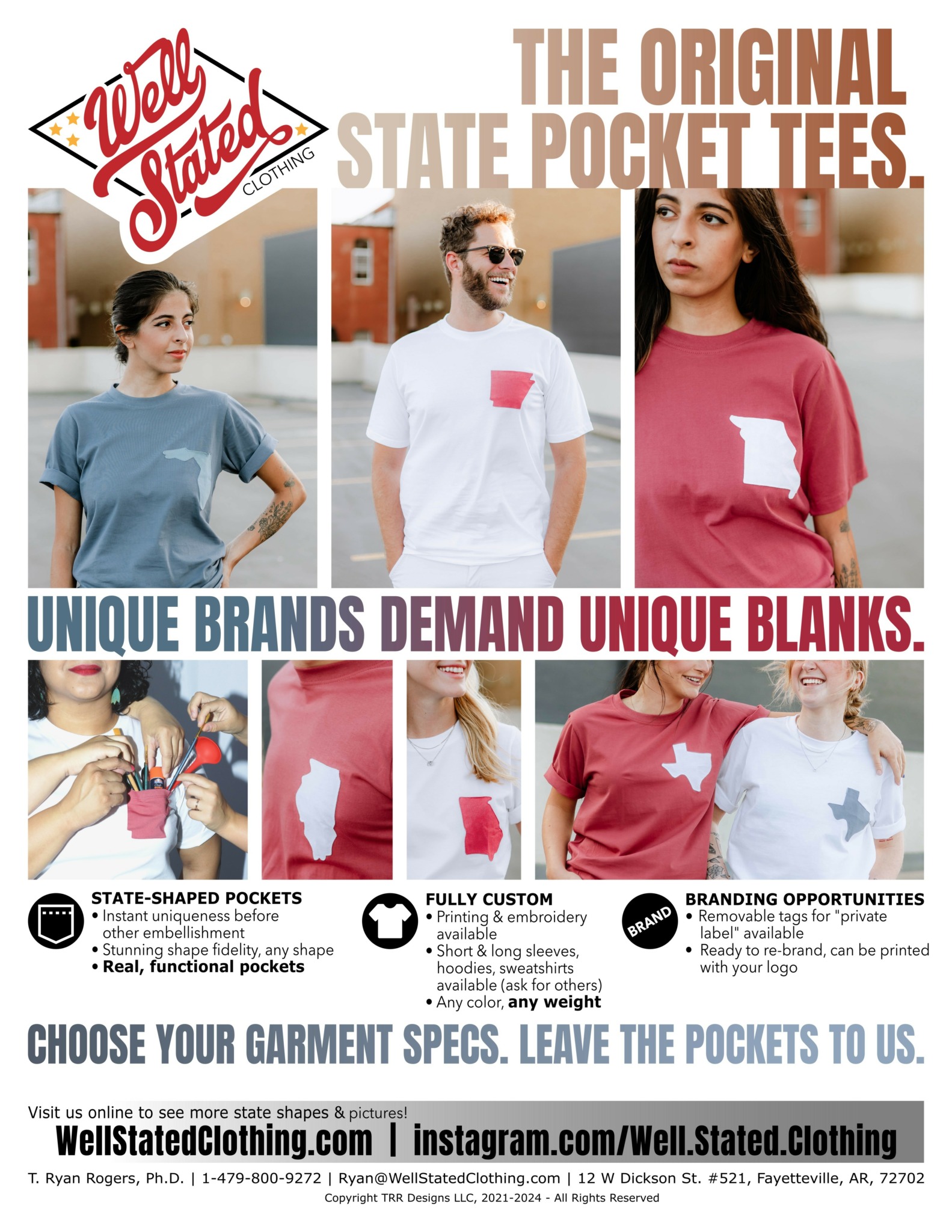
Image Credits
andrea pruitt photography


